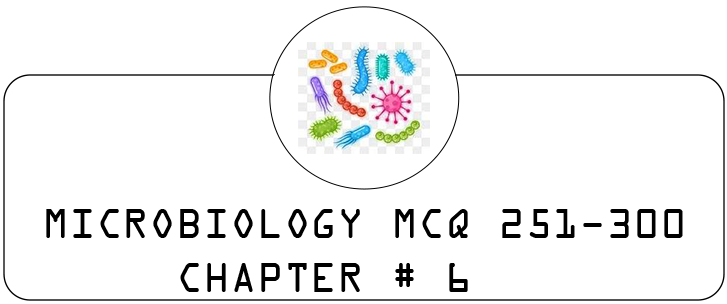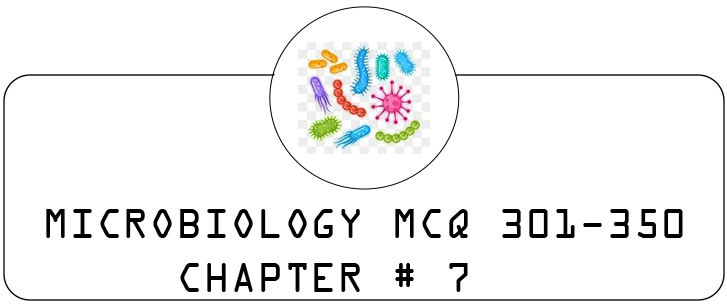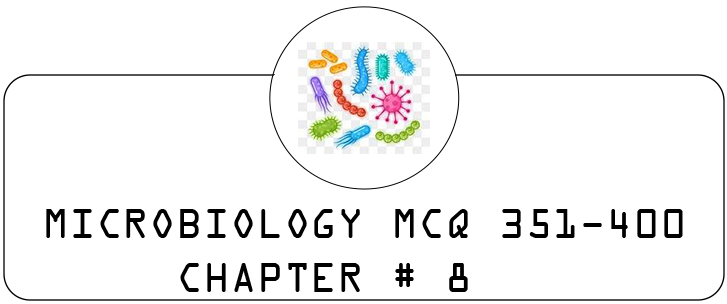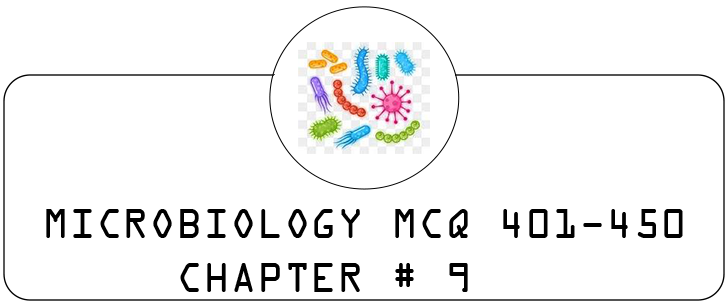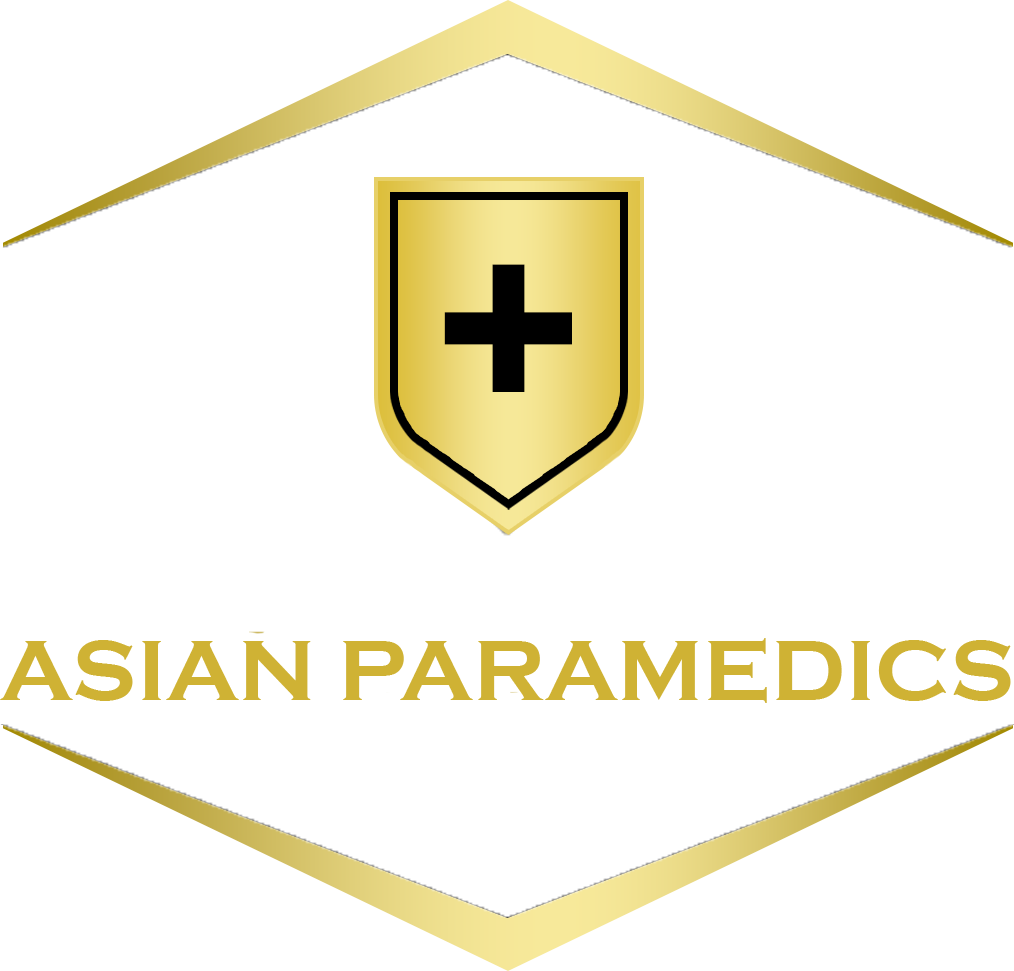
201. To be an antigen, the chemical molecule (protein) needs:
A. High molecular weight
B. Chemical complexity
C. High MW and chemical complexity ✅
D. Nucleic acid
A. High molecular weight
B. Chemical complexity
C. High MW and chemical complexity ✅
D. Nucleic acid
202. The immunity acquired by inoculation of living organism of attenuated virulence is:
A. Artificial active immunity ✅
B. Passive immunity
C. Natural active immunity
D. Local immunity
A. Artificial active immunity ✅
B. Passive immunity
C. Natural active immunity
D. Local immunity
203. Fluid extruded from clotted blood is known as ____.
A. Plasma
B. Serum ✅
C. Buffy coat
D. Lymph
A. Plasma
B. Serum ✅
C. Buffy coat
D. Lymph
204. Which PRR recognizes distinct molecular structures, abundant to many cells and there are ten in humans?
A. Nod-like receptors
B. RIG-like receptors
C. Toll-like receptors ✅
D. PAMP of neutrophils
A. Nod-like receptors
B. RIG-like receptors
C. Toll-like receptors ✅
D. PAMP of neutrophils
205. A signaling molecule from microbes recognized by phagocytes is:
A. Complement
B. PAMP ✅
C. Pyrogen
D. Lectin
A. Complement
B. PAMP ✅
C. Pyrogen
D. Lectin
206. Which of the following is NOT produced by phagocytes?
A. Hydroxyl radical
B. Superoxide anion
C. Hydrogen peroxide
D. Bradykinin ✅
A. Hydroxyl radical
B. Superoxide anion
C. Hydrogen peroxide
D. Bradykinin ✅
207. Acquired / adaptive immune cells include?
A. Lymphocytes ✅
B. Eosinophils
C. Basophils
D. Neutrophils
A. Lymphocytes ✅
B. Eosinophils
C. Basophils
D. Neutrophils
208. Reproduction in bacteria occurs by:
A. Budding
B. Bursting
C. Binary Fission ✅
D. Fragmentation
A. Budding
B. Bursting
C. Binary Fission ✅
D. Fragmentation
209. Bacteria eating viruses are known as:
A. Phagocytes
B. Viricides
C. Prophages
D. Bacteriophages ✅
A. Phagocytes
B. Viricides
C. Prophages
D. Bacteriophages ✅
210. Which of the following is Gram-positive bacteria?
A. Staphylococcus ✅
B. E. coli
C. Salmonella
D. Pseudomonas
A. Staphylococcus ✅
B. E. coli
C. Salmonella
D. Pseudomonas
211. In plasmid DNA isolation, ____________ is used to neutralize the solution, enabling DNA to renature.
A. NaCl
B. Potassium acetate ✅
C. Acetic acid
D. All of these
A. NaCl
B. Potassium acetate ✅
C. Acetic acid
D. All of these
212. In genomic DNA isolation, disruption of nucleoproteins and degradation of proteins is carried out by:
A. SDS ✅
B. Proteinase K
C. Isopropanol
D. Alcohol
A. SDS ✅
B. Proteinase K
C. Isopropanol
D. Alcohol
213. “Cryptococcus” is transmitted in form of:
A. Endospores
B. Yeast ✅
C. Conidia
D. Spores
A. Endospores
B. Yeast ✅
C. Conidia
D. Spores
214. Selective media for TB bacilli is:
A. NNN media
B. Lowenstein–Jensen (LJ) medium ✅
C. Mannitol Salt Agar (MSA)
D. MacConkey media
A. NNN media
B. Lowenstein–Jensen (LJ) medium ✅
C. Mannitol Salt Agar (MSA)
D. MacConkey media
215. Widal test is used for:
A. Typhoid fever ✅
B. Salmonella
C. Brucellosis
D. All of these
A. Typhoid fever ✅
B. Salmonella
C. Brucellosis
D. All of these
216. Cell wall of 'fungi' is made up of:
A. Peptidoglycan
B. Murine
C. Chitin ✅
D. Cellulose
A. Peptidoglycan
B. Murine
C. Chitin ✅
D. Cellulose
217. Ascoli’s test helps to confirm lab diagnosis of ____.
A. Tetanus
B. Anthrax ✅
C. Typhoid
D. Cholera
A. Tetanus
B. Anthrax ✅
C. Typhoid
D. Cholera
218. Transfection is insertion of DNA into ______ cells.
A. Bacterial
B. Eukaryotic ✅
C. Viruses
D. Both “A” and “B”
A. Bacterial
B. Eukaryotic ✅
C. Viruses
D. Both “A” and “B”
219. In agarose gel electrophoresis, loading buffer gives __________ to sample.
A. Color
B. Density
C. Shade
D. Color and density ✅
A. Color
B. Density
C. Shade
D. Color and density ✅
220. The virulence factor of botulism is a/an______.
A. Endotoxin
B. Exotoxin ✅
C. Neurotoxin
D. Hemolytic toxin
A. Endotoxin
B. Exotoxin ✅
C. Neurotoxin
D. Hemolytic toxin
221. Specific immunity develops only after exposure to a specific pathogen is known as:
A. Innate immunity
B. Adaptive immunity ✅
C. Acquired immunity
D. Natural immunity
A. Innate immunity
B. Adaptive immunity ✅
C. Acquired immunity
D. Natural immunity
222. Major Histocompatibility Complex (MHC) molecules function to:
A. Present antigens to T cells ✅
B. Activate B cells
C. Stimulate phagocytosis
D. Produce antibodies
A. Present antigens to T cells ✅
B. Activate B cells
C. Stimulate phagocytosis
D. Produce antibodies
223. The vaccine for hepatitis B is made from:
A. Live attenuated virus
B. Inactivated virus
C. Recombinant surface antigen ✅
D. Whole virus
A. Live attenuated virus
B. Inactivated virus
C. Recombinant surface antigen ✅
D. Whole virus
224. The T cell receptor (TCR) recognizes:
A. Free-floating antigens
B. Antigens presented by MHC molecules ✅
C. Pathogen-associated molecular patterns
D. Antibodies
A. Free-floating antigens
B. Antigens presented by MHC molecules ✅
C. Pathogen-associated molecular patterns
D. Antibodies
225. An antibody's specificity is determined by:
A. The constant region
B. The variable region ✅
C. The Fc region
D. The heavy chain
A. The constant region
B. The variable region ✅
C. The Fc region
D. The heavy chain
226. Which type of immunity is transferred from mother to fetus through the placenta?
A. Active immunity
B. Passive immunity ✅
C. Artificial immunity
D. Cell-mediated immunity
A. Active immunity
B. Passive immunity ✅
C. Artificial immunity
D. Cell-mediated immunity
227. The primary purpose of vaccination is to:
A. Cause disease
B. Create herd immunity
C. Stimulate an immune response ✅
D. Increase pathogen spread
A. Cause disease
B. Create herd immunity
C. Stimulate an immune response ✅
D. Increase pathogen spread
228. Immunoglobulin that can cross the placenta is:
A. IgA
B. IgM
C. IgE
D. IgG ✅
A. IgA
B. IgM
C. IgE
D. IgG ✅
229. Which immunoglobulin is primarily found in mucosal areas?
A. IgA ✅
B. IgG
C. IgM
D. IgD
A. IgA ✅
B. IgG
C. IgM
D. IgD
230. The most abundant type of antibody in human serum is:
A. IgA
B. IgE
C. IgM
D. IgG ✅
A. IgA
B. IgE
C. IgM
D. IgG ✅
231. The process by which B cells develop into plasma cells is called:
A. Clonal selection ✅
B. Somatic recombination
C. Antigen processing
D. Antigen presentation
A. Clonal selection ✅
B. Somatic recombination
C. Antigen processing
D. Antigen presentation
232. Antibodies function primarily by:
A. Destroying pathogens
B. Neutralizing toxins
C. Marking pathogens for destruction ✅
D. All of these
A. Destroying pathogens
B. Neutralizing toxins
C. Marking pathogens for destruction ✅
D. All of these
233. A hypersensitivity reaction that occurs within minutes of exposure to an antigen is:
A. Type I ✅
B. Type II
C. Type III
D. Type IV
A. Type I ✅
B. Type II
C. Type III
D. Type IV
234. Which type of T cell is responsible for killing infected host cells?
A. Helper T cells
B. Cytotoxic T cells ✅
C. Regulatory T cells
D. Memory T cells
A. Helper T cells
B. Cytotoxic T cells ✅
C. Regulatory T cells
D. Memory T cells
235. The immune response that results from exposure to a pathogen is:
A. Innate immunity
B. Adaptive immunity ✅
C. Passive immunity
D. None of these
A. Innate immunity
B. Adaptive immunity ✅
C. Passive immunity
D. None of these
236. Which of the following is NOT a characteristic of the innate immune response?
A. Rapid response
B. Specificity ✅
C. No memory
D. Activation of phagocytes
A. Rapid response
B. Specificity ✅
C. No memory
D. Activation of phagocytes
237. The first line of defense in the immune system is:
A. Skin and mucous membranes ✅
B. Phagocytes
C. Antibodies
D. T lymphocytes
A. Skin and mucous membranes ✅
B. Phagocytes
C. Antibodies
D. T lymphocytes
238. Which of the following is an example of a mechanical barrier in innate immunity?
A. Mucus
B. Skin ✅
C. Antibodies
D. Phagocytes
A. Mucus
B. Skin ✅
C. Antibodies
D. Phagocytes
239. The term used to describe the ability of the body to recognize and defend itself against specific pathogens is:
A. Immunity ✅
B. Infection
C. Disease
D. Inflammation
A. Immunity ✅
B. Infection
C. Disease
D. Inflammation
240. A reaction that occurs when the immune system attacks its own cells is called:
A. Autoimmunity ✅
B. Immunodeficiency
C. Allergy
D. Allergen
A. Autoimmunity ✅
B. Immunodeficiency
C. Allergy
D. Allergen
241. What type of pathogen causes malaria?
A. Bacteria
B. Virus
C. Protozoa ✅
D. Fungi
A. Bacteria
B. Virus
C. Protozoa ✅
D. Fungi
242. The antibiotic penicillin targets:
A. Cell wall synthesis ✅
B. Protein synthesis
C. DNA replication
D. RNA synthesis
A. Cell wall synthesis ✅
B. Protein synthesis
C. DNA replication
D. RNA synthesis
243. Which of the following is NOT a mechanism of antibiotic resistance?
A. Enzymatic degradation of the antibiotic
B. Alteration of the antibiotic's target site
C. Increased absorption of the antibiotic ✅
D. Efflux pumps
A. Enzymatic degradation of the antibiotic
B. Alteration of the antibiotic's target site
C. Increased absorption of the antibiotic ✅
D. Efflux pumps
244. Which type of mutation changes a single nucleotide in the DNA sequence?
A. Frameshift mutation
B. Substitution mutation ✅
C. Deletion mutation
D. Insertion mutation
A. Frameshift mutation
B. Substitution mutation ✅
C. Deletion mutation
D. Insertion mutation
245. The part of the immune system that involves antibodies is:
A. Cell-mediated immunity
B. Humoral immunity ✅
C. Innate immunity
D. Complement system
A. Cell-mediated immunity
B. Humoral immunity ✅
C. Innate immunity
D. Complement system
246. Which of the following is a common sign of infection?
A. Fever ✅
B. Dehydration
C. Hypothermia
D. Hyperglycemia
A. Fever ✅
B. Dehydration
C. Hypothermia
D. Hyperglycemia
247. What is the primary function of macrophages in the immune response?
A. Produce antibodies
B. Phagocytosis ✅
C. Activate T cells
D. Recruit neutrophils
A. Produce antibodies
B. Phagocytosis ✅
C. Activate T cells
D. Recruit neutrophils
248. Which of the following is a function of the complement system?
A. Opsonization of pathogens ✅
B. Antibody production
C. Direct killing of pathogens
D. Both A and C
A. Opsonization of pathogens ✅
B. Antibody production
C. Direct killing of pathogens
D. Both A and C
249. Which of the following types of immunity is acquired through vaccination?
A. Passive immunity
B. Active immunity ✅
C. Innate immunity
D. Herd immunity
A. Passive immunity
B. Active immunity ✅
C. Innate immunity
D. Herd immunity
250. The primary immune response occurs:
A. After the first exposure to an antigen ✅
B. After subsequent exposures to an antigen
C. Immediately after exposure to a pathogen
D. Within hours of infection
A. After the first exposure to an antigen ✅
B. After subsequent exposures to an antigen
C. Immediately after exposure to a pathogen
D. Within hours of infection

